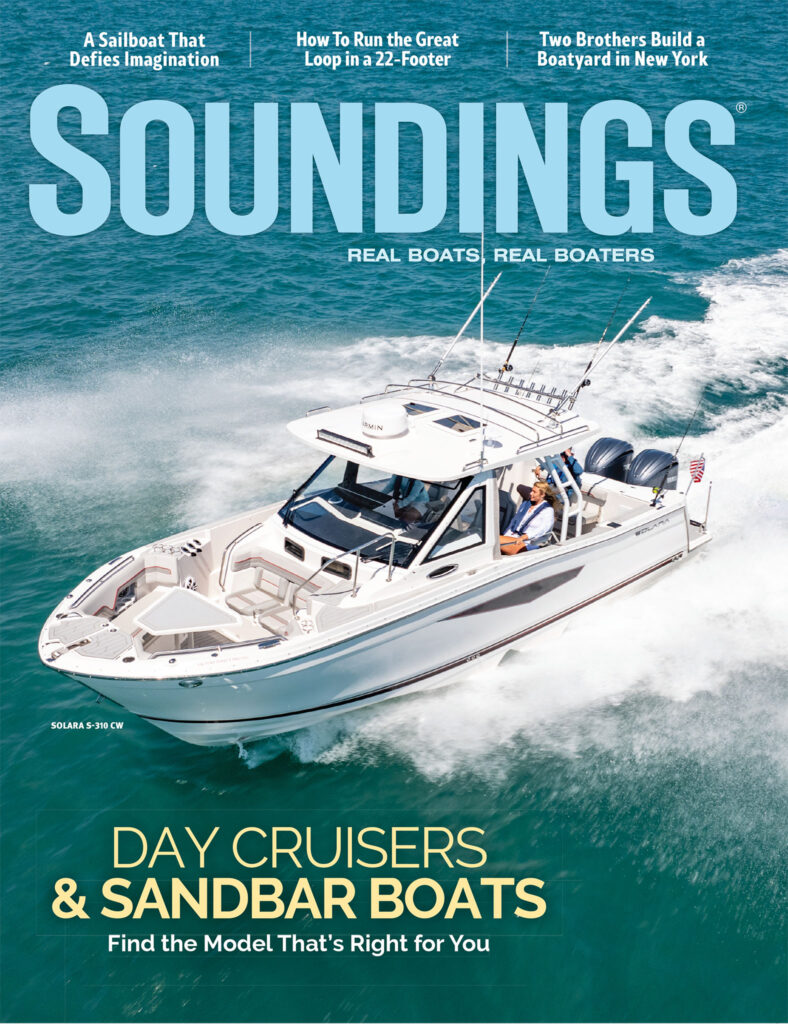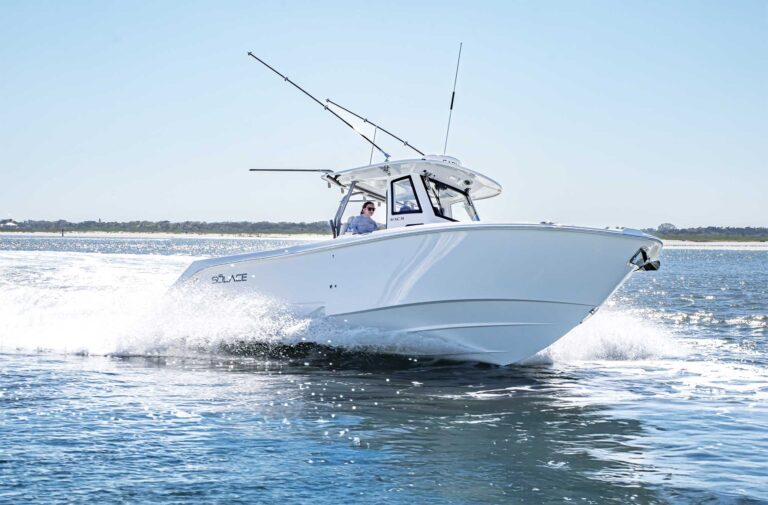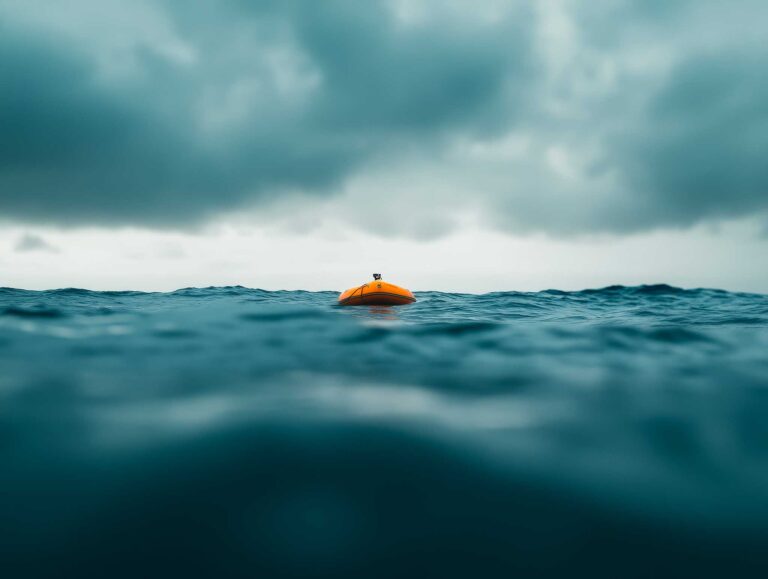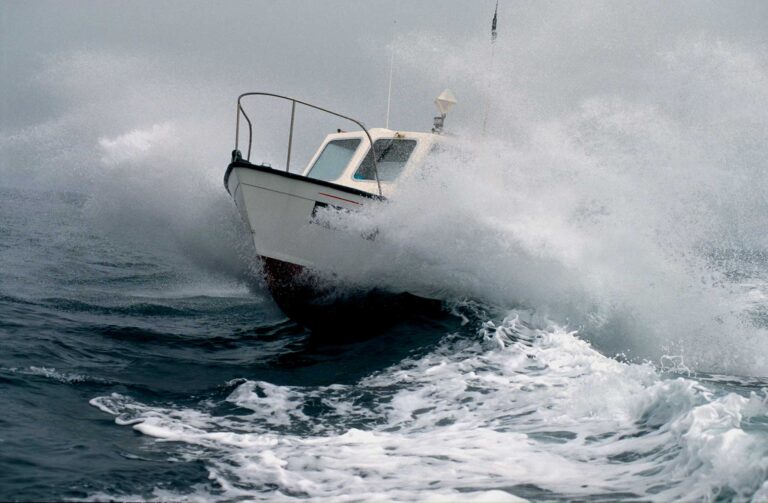Regulator 30 Express
Regulator ranks as one of the top builders of center console fishing boats, with seven models from 23 to 32 feet. Now the Edenton, N.C., builder has tossed its hat into the express fishing boat ring, offering a vessel with a full cabin, two berths, a galley, head with shower, and an optional flat-screen television. It’s the Regulator 30 Express, and it made its in-water debut at the Miami International Boat Show.
Regulator dabbled with a cabin boat in the 1990s, offering the 26 Express for six years. But its bread-and-butter has always been the center console. So why mess with another express boat? “Because our customers really wanted a cabin boat, especially those in the North,” says Regulator mid-Atlantic sales manager Wyatt Lane, who gave me a tour of the boat at the Miami show in February.
The company again tapped naval architect Lou Codega, who has designed all other Regulators, to come up with a 30-foot, outboard-powered express boat. Codega first looked at the two Regulator hulls closest in size — the 29 and 32 — as possible springboards to the 30. “[But] it just wasn’t working out right,” says Codega. “I was making too many compromises.” He needed more beam. The solution: a completely new hull design.
Give her some beam
Codega maintained the deep-vee and chine profile (sharp and angled down at the forward section of the boat) of other Regulators, but endowed the 30 with more planing surface aft to give the heavier hull extra lift. Although the 30 is beamier than the 29 and 32, its weight compensates for the extra beam in the ride-quality department, says Codega. (In theory, long, narrow boats run smoother in head seas than those that are beamier and shorter.)
“I’m very pleased with this boat,” says Codega, who also has designed vessels for Cabo, Rybovich and Carolina Classic. “It’s got a big-boat feel to it … a big express boat.”
I’d have to agree with that statement, from bow to stern. Regulator certainly packs into the 30 all the ingredients you’d find in the cockpit of an express: a transom door with beefy hardware, out-of-the-way cleats, and cavernous fishboxes and live wells. Thick rubber gaskets rim all hatch openings, and the lids, which lift and lower with the help of stainless-steel gas struts, are gelcoated on both sides. Nice.
I asked Lane about a recessed circular section — flat and about the size of a saucer — I saw in the lazarette. “This is where the boat’s transducer is mounted,” he said. “The transducer can be mounted flat so it can do its job correctly.”
Forward of the lazarette, the 5-kW gas genset fit snugly — maybe too snugly — into a hatch on centerline. The seawater filter, tucked into the port side of the hatch, looked tough to service.
I thought the single step at each side deck could have been larger; finding it on the way from the side deck to the cockpit was a bit tricky. The bow rail begins several feet forward of the cockpit. There’s plenty of seating on deck. A two-person mezzanine settee faces aft, while the L-shaped companion seating wraps around the center helm station. It’s a bit of a tight squeeze between the single Pompanette helm chair and the companion seating.
Short spin
Seated at the helm, I punched the throttles, and the boat rose to plane with little bow rise, never obstructing the view of the horizon. And tabs weren’t needed to push the bow down — a sign of a good hull design. With the Teleflex power-assist steering, I easily executed a few tight turns at a cruising speed of about 30 mph. The stern didn’t slide, and the props on the twin Yamaha F350s held their grip.
The engines are mounted on an Armstrong transom bracket, which frees up more than 40 inches of interior and gives the boat added running surface for better speed, according to Regulator. I didn’t get a chance to run her offshore, but she breezed through the 2-foot wakes and sloppy chop on Biscayne Bay.
The switches, buttons and engine controls were all pretty easy to reach. I thought the trim tab switches were stuck in an awkward spot, however — on the vertical portion of the console to port of the wheel. I like them right next to the throttles, where I can find them without taking my eyes off the water.
With three 200-pounders on board, 100 gallons of fuel and a hull coated with bottom paint, we hit a top speed of 54.2 mph, the F350s burning a combined 70 gallons per hour. This equates to 0.8 mpg. Backed down to 3,800 rpm, she cruised at 33 mph and got 1 mpg — decent fuel economy for a heavy 30-footer with 700 horses.
Noises levels at the helm were relatively low. The needle of the decibel meter fluttered around 86 at 3,800 rpm; at full blast, it hit 91 dBA. This is loud, but a respectable reading for a powerboat.
Cabin
The steps to the cabin twist inboard — and so will you as you go below. It’s another tight squeeze; I almost hit my head on the gas lift propping up the companionway door’s top section. The galley to port comes with a Corian countertop, single-burner stove and a drawer-style refrigerator (easier access to food and drinks). I’m 6 feet, 2 inches tall, and I had no problem standing in the cabin, with its 6 feet, 4 inches of headroom.
Regulator wanted to keep a clean, simple look down here, so it went with an all-fiberglass headliner. The V-berth forward doubles as a dinette area. I found it tight around the dinette table, but workable. Lane says Regulator is considering a smaller table. The head was nicely tooled with a shower and vanity, but the sink was small.
Construction
Regulator uses a vinylester/polyester hybrid resin throughout the entire hull and in all fiberglass parts. The cockpit and cabin liner are bonded to the top of a one-piece stringer system with structural putty and through-bolted. The hull sides are cored with Divinycell for weight savings. Regulator builds the bottom with fiberglass only. Regulator backs the hull with a five-year warranty and the gelcoat with a one-year warranty.
Final thoughts
Regulator has built a darn good express boat. Some areas on deck and in the cabin are tight, but the builder has packed a lot of stuff into a relatively small boat. I expected the ride to be exceptional — and it was. With the two big Yamahas, the boat retails for $269,000. The signature soft ride coupled with the weather-protection should make for happy owners.
LOA: 30 feet, 5 inches (without pulpit)
BEAM: 10 feet, 7 inches
DRAFT: 2 feet, 3 inches (engines up), 3 feet, 3 inches (engines down) DISPLACEMENT: 11,350 pounds
TRANSOM DEADRISE: 24 degrees
TANKAGE: 300 gallons fuel, 35 gallons water, 6.5 gallons waste
POWER: twin Yamaha F350s
SPEED: 54 mph top, 33.4 mph cruise
PRICE: $269,000
CONTACT: Regulator Marine, Edenton, N.C.
Phone: (252) 482-3837.










